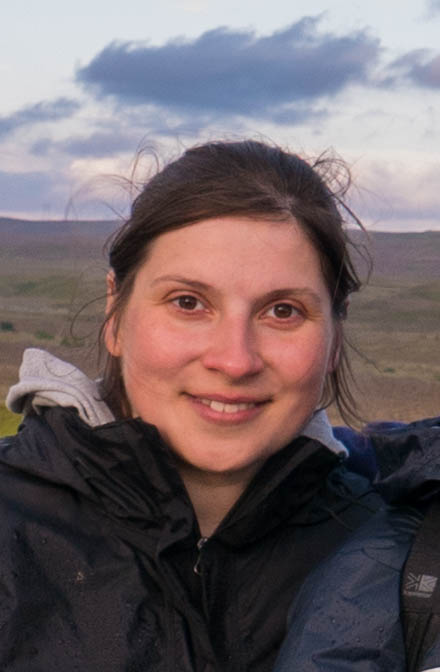TASQ Minsymposium January 2021
The TASQ minisymposium in October will take place on Friday January 22, 2021. It will be hold electronically via the zoom platform.
The minisymposium will be open for anyone. If you want to join, follow this link. The meeting will be open shortly before 12 o'clock (noon), CET.
Program
Maria Pilar de Lara Castells (Institute of Fundamental Physics (AbinitSim Unit) at the Spanish National Research Council (CSIC), Madrid, Spain)
First Principles Modelling of TiO2-Supported Subnanometer-Sized Metal Clusters: From Clean Energy Sources to 2D Polaronic Materials.
Rachel Crespo Otero (Queen Mary University of London, United Kingdom)
Modelling aggregation induced emission in molecular crystals.
Marta Gałyńska (Institute of Physics, Nicolaus Copernicus University in Toruń, Poland)
Diamine cation case: does the localized state exist?
First Principles Modelling of TiO2-Supported Subnanometer-Sized Metal Clusters: From Clean Energy Sources to 2D Polaronic Materials
The very recent development of highly selective experimental techniques making possible the synthesis of subnanometer-sized metal clusters is pushing our understanding of these, more "molecular" than "metallic", systems far beyond the present knowledge in materials science. When the cluster size is reduced to a small number of atoms, the d-band of the metal splits into a subnanometer- sized network of discrete molecule-like d orbitals, with the inter-connections having the length of a chemical bond (1-2 Angs.). The spatial structures of the molecular orbitals of these small clusters make all the metal atoms cooperatively active and accessible, leading to the appearance of their novel properties and outstanding stability (see, e.g., [1-4]).
By presenting specific applications [5-11], I will illustrate how state-of-the-art first principles modelling, when combined with cutting-edge synthesis (wet chemical) procedures and experimental caracterization techniques, is helping us to shape the modern field of subnanometer science. After briefly outlining our computational approaches [5,6,8], I will show how modified TiO2 surfaces with Cu5 and/or Ag5 atomic quantum clusters can be visible-light photo-active materials [5,6,9], potential photocatalysts for CO2 reduction [7], and hosts of multiple surface polarons [9,11]. Moreover, I will also explain how extended first principle modelling of Ag5-modified TiO2 surfaces has provided new relevant fundamental insights into a general polarization phenomenom accompanying the formation of surface polarons [9,10-11], agreeing very well with the experimental observations through X-ray absorption near edge structure (XANES) spectroscopy [9].
-
[1] S. Huseyinova, J. Blanco, F.G. Requejo, J.M. Ramallo-López, M.C. Blanco, D. Buceta, and M. A. López-Quintela, J. Phys. Chem. C 123 (2019) 27064.
-
[2] P. Concepción, M. Boronat, S. García-García, E. Fernández, and A. Corma, ACS Catal. 7 (2017) 3560.
-
[3] E.C. Tyo, and S. Vajda, Nat. Nano. 10 (2015) 577.
-
[4] D. Buceta, S. Huseyinova, M. Cuerva, H. Lozano, L.J. Giovanetti, J.M. Ramallo-López, P. López-Caballero et al., Materials Today, submitted.
-
[5] M.P. de Lara-Castells, C. Cabrillo, D.A. Micha, A.O. Mitruschenkov, and T. Vazhappilly, Phys. Chem. Chem. Phys. 20 (2018) 19110.
-
[6] M.P. de Lara-Castells, A.W. Hauser, J.M. Ramallo-López, D. Buceta, L.J. Giovanetti, M.A. López-Quintela, and F.G. Requejo, J. Mater. Chem. A 7 (2019) 7489.
-
[7] P. López-Caballero, A.W. Hauser, and M P. de Lara-Castells, J. Phys. Chem. C 123 (2019) 23064.
-
[8] A. Zanchet, P. López-Caballero, A.O. Mitruschenkov, D. Buceta, M.A. López- Quintela, A.W. Hauser, and M.P. de Lara-Castells, J. Phys. Chem. C 123 (2019) 27064.
-
[9] P. López-Caballero, J.M. Ramallo-López, L.J. Giovanetti, D. Buceta, S. Miret-Artés, M.A. López-Quintela, F.G. Requejo, J. Mater. Chem. A 8 (2020) 6842.
-
[10] M. P. de Lara-Castells and S. Miret-Artés, Europhysics News (accepted Feature). ArXiv:submit/3401609.
-
[11] P. López-Caballero, S. Miret-Artés, A.O. Mitrushchenkov, and M.P. de Lara- Castells, J. Chem. Phys. Special Collection in Honor of Women in Chemical Physics and Physical Chemistry 153 (2020) 164702.

Modelling aggregation induced emission in molecular crystals
Light-emitting materials find applications in display technologies, optical communication, data storage, biological sensing and solid-state lasing. Aggregation-induced emission (AIE) offers a route for the development of luminescent technologies with high quantum efficiencies. However, maximising fluorescence quantum efficiencies is a formidable challenge in attaining first-principles materials design, due to the interplay between the electronic structure of the chromophore and the molecular crystal. The identification of radiative and nonradiative channels, and how these are affected by aggregation, can help rationalise the emissive properties of materials and aid in the design of yet more efficient fluorophores. In this talk, I will discuss how inter- and intramolecular processes determine the emissive properties of a series of crystals including prototypical propeller-shaped AIE, intramolecular proton transfer chromophores and aromatic molecules with applications in lasers.[1–4] The excited state mechanisms will be examined considering the competition between nonradiative and radiative pathways. The role of conical intersections will be addressed in the context of the 3D-structure of the crystals, exciton couplings and the presence of triplet states. The fromage (FRamewOrk for Molecular AGgregate Excitations) platform[5,6] will be presented as a tool to assist with the investigation of photochemical processes in molecular crystals.
-
[1] L. Stojanović and R. Crespo‐Otero, ChemPhotoChem, 2019, 3, 907–915.
-
[2] M. Dommett, M. Rivera and R. Crespo-Otero, J. Phys. Chem. Lett., 2017, 8, 6148–6153.
-
[3] M. Dommett, M. Rivera, M. T. H. Smith and R. Crespo-Otero, J. Mater. Chem. C, 2020, 8, 2558–2568.
-
[4] M. Dommett and R. Crespo-Otero, Phys. Chem. Chem. Phys., 2017, 19, 2409–2416.
-
[5] M. Rivera, M. Dommett, A. Sidat, W. Rahim and R. Crespo‐Otero, J. Comput. Chem., 2020, 41, 1045–1058.
-
[6] M. Rivera, M. Dommett and R. Crespo-Otero, J. Chem. Theory Comput., 2019, 15, 2504–2516.

Diamine cation case: does the localized state exist?
The N,N’-dimethylpiperazine cation has received a great deal of attention because of recent experimental studies and the failure of most density functional approximations to produce a localized state. A cut through the energy surface is generated at the level of multireference configuration interaction (MRCI+Q), Hartree-Fock (HF), Möller-Plesset second-order perturbation theory (MP2), coupled cluster theory (CCSD and CCSD(T)) and complete active space self-consistent field calculations with and without perturbative correction (CASSCF and NEVPT2). Remarkably, while CCSD produces a localized state, CCSD(T) does not, and similarly, large active-space CASSCF does while NEVPT2 does not. The inclusion of dynamic correlation in a perturbative way thus adversely affects the accuracy of the calculation, most notably for CCSD(T), the 'golden standard'. The MRCI+Q(11, 12) and DMRG-CASSCF(19,20) calculations are in close correspondence with the experimental results.
